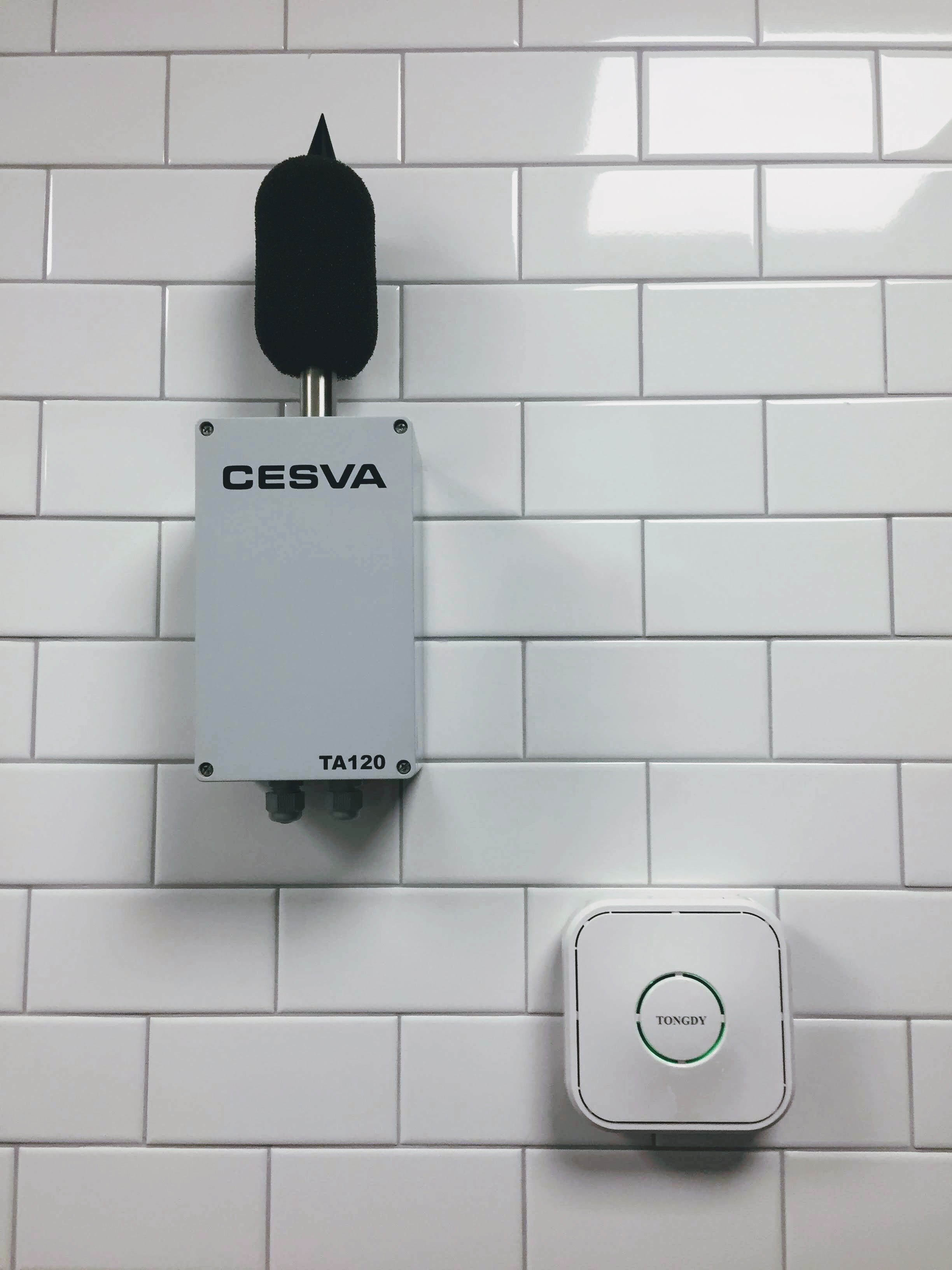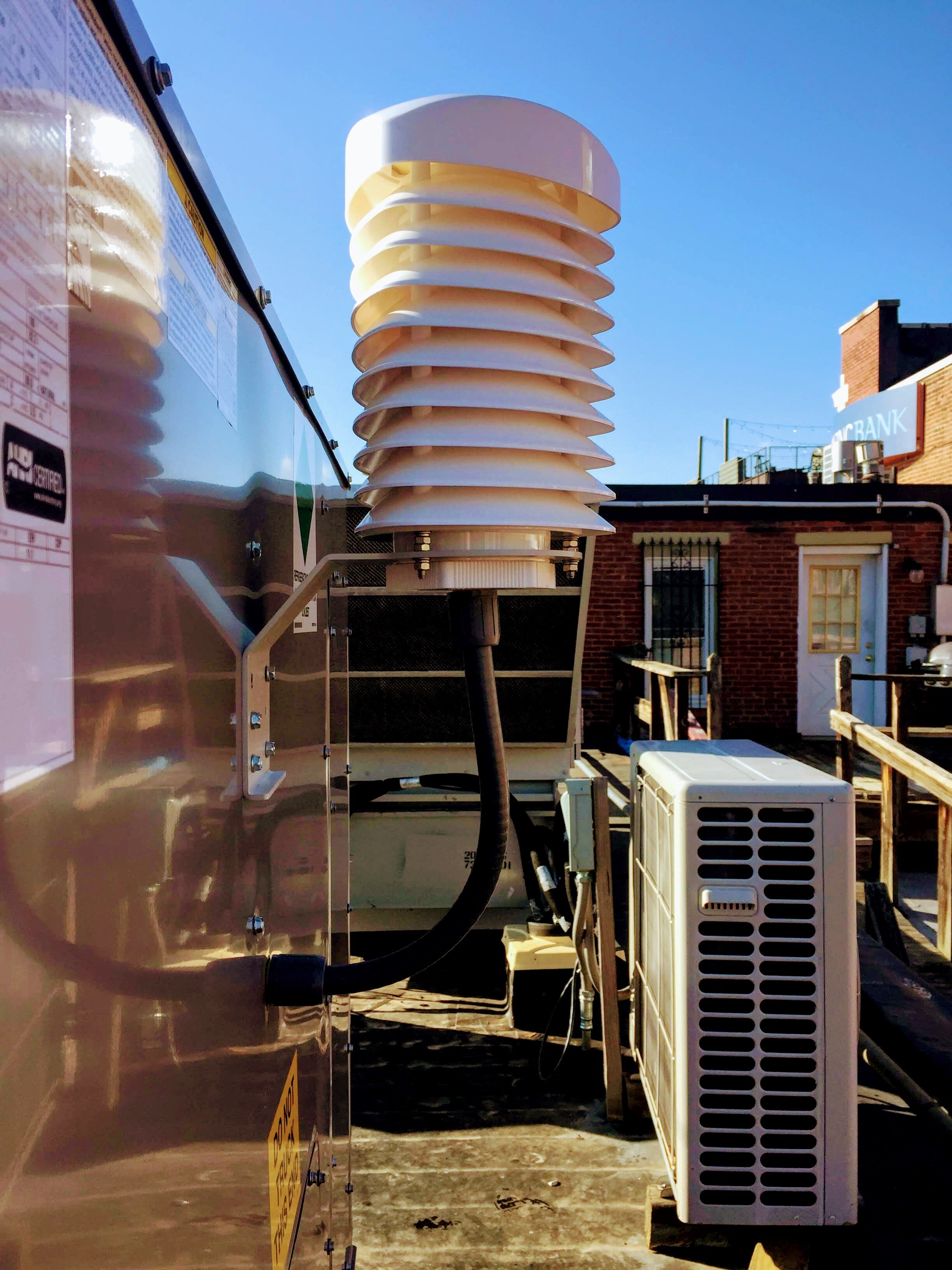As you may have seen in recent articles from the Sewickley Herald and NEXT Pittsburgh, the new Sewickley Tavern is expected to be the first restaurant in the world to achieve the international RESET air quality standard. It will also be the first restaurant to pursue both RESET certifications offered: Commercial Interiors and Core & Shell.
When the restaurant opens, a vast array of sensors and monitors will measure comfort and wellness factors in the building’s indoor environment, from the decibel level of ambient noise to the air’s amount of carbon dioxide, particulate matter, volatile organic compounds, temperature, and relative humidity. This information will be streamed to the cloud and displayed in integrated dashboards that assess conditions in real time, allowing the owners to make adjustments as needed. Sophisticated air filtration and ventilation systems will work in harmony to optimize the environment for the health and comfort of staff and diners.
It’s a prime example of how building science and technology now allow us to create buildings that, for the first time, can actively improve our health and lower our risks.
Our mandate from the client going into the redesign was to consider sustainability in the renovation of the historic building. What came out of the process was an ultra-high-performance renovation positioned to achieve a prestigious world’s-first accolade.



So why is Sewickley Tavern the first restaurant in the world to do this?
Good question. It’s the one that I am asked most frequently by the media and by members of our community.
To answer it, it’s helpful first to answer the inverse question, why isn’t this being done everywhere? There are some significant reasons for that. Here’s how I see them breaking down:
1. The RESET standard is new, and it is highly technical.
This standard is one of the first to look holistically at the connection between buildings and health. As described on the RESET website, the certification program was launched in 2013 and “focuses on the health of people and their environment. It is the world’s first standard to be sensor-based, tracking performance and generating healthy building analytics in real-time. Certification is awarded when measured IAQ results meet or exceed international standards for health.”
Bottom line: RESET is a leader in technology-driven innovations for sustainable building.
2. Sustainable building is a confusing morass of buzzwords, acronyms and programs.
LEED, green building, smart building…buzzwords galore! Many people have heard of some of them. But few people understand the full range of approaches that exist, how they differ, and why the differences matter. The building design and construction industry has not done a good job of communicating to owners and to the broader market in general how to measure the respective values and ROI. The result is superficial awareness, at best, or polarizing prejudice, at worst.
Bottom line: Building professionals have failed to offer clarity in a maze of confusing options.
3. Until now, restaurants have focused on the food side of sustainability.
Early interest in sustainability among restaurant owners and chefs has focused, understandably, on food. Also, not all restaurants own the buildings in which they operate, so they may not see renovations as an option. Those who do own their buildings may not be aware of how high-performance building or renovations can complement their greater sustainability goals. So while restaurants are at the forefront of the sustainable food movement, most are not yet involved in the healthy building movement. Because Studio St.Germain is committed to using high-performance buildings to improve health and well-being in the community, we suggest that healthy buildings are the next logical step for sustainability-minded restaurants.
Bottom line: Sustainability-minded restaurants are just learning about healthy buildings.
4. Many people assume sustainable building is expensive and unattainable.
Sustainable building is poorly understood. “High-performance building” is virtually unheard of. “Ultra-high performance building” is the domain of building science nerds (That’s me). Most professionals in building design and construction don’t even know what the latest innovations are yet. Until now, the business case for investing in sustainable building options has been weak, though there is growing evidence that sustainability investments offer measurable value. Because it is perceived as new and expensive, sustainability can be dismissed as “nice to have” but impractical and unrealistic.
Bottom line: Owners are put off by perceived complexity and costs.
Conclusion
As an architect dedicated to transforming the way people think about building design, I work hard every day to give my clients accessible sustainability options. I developed the High Performance Program to meet owners where they are in terms of their sustainability knowledge and goals, and to match them up with the powerful and cost-effective options they can afford. This helps to make highly technical programs understandable to both clients and contractors.
Today we have the knowledge and power to overcome the obstacles of technical complexity, confusion, and ignorance. Thanks to newly integrated standards like RESET, we can make technology-driven solutions affordable even for small businesses, and start collecting comprehensive data that can establish industry baselines. And with groundbreaking platforms to compare business models with actual data, metrics now drive real ROI analyses, demonstrating beyond any doubt that investing in sustainable building pays.
In the Sewickley Tavern, the right-place-right-time combination of sustainability-minded clients and the studio’s High Performance Program made the technology decisions simple; that’s why this is the first RESET restaurant in the world. With its opening, we are showing the world how very affordable a high-performing restaurant building can be.
Finally, why did all this happen here in Pittsburgh? It happened here for the same reason positive change happens anywhere: a small group of committed individuals with a common goal decided to take action. With its long history of innovation, current expertise in technology, and industrial heritage and accompanying air quality issues, Pittsburgh is actually the most natural place on earth for this first.
